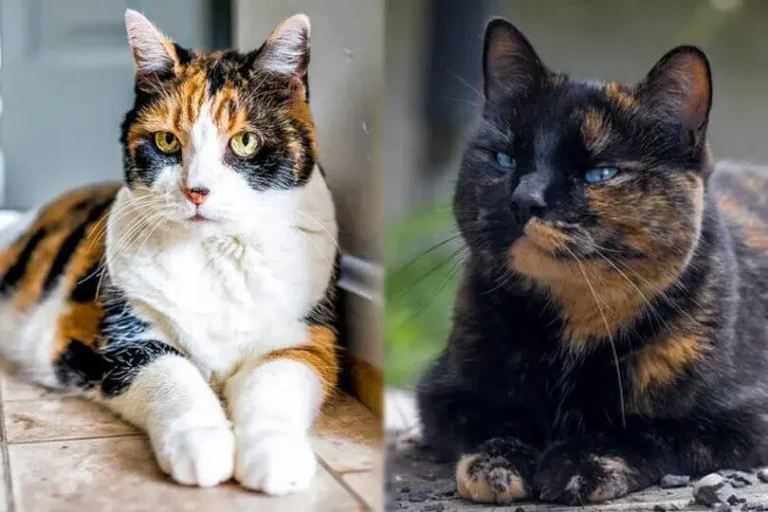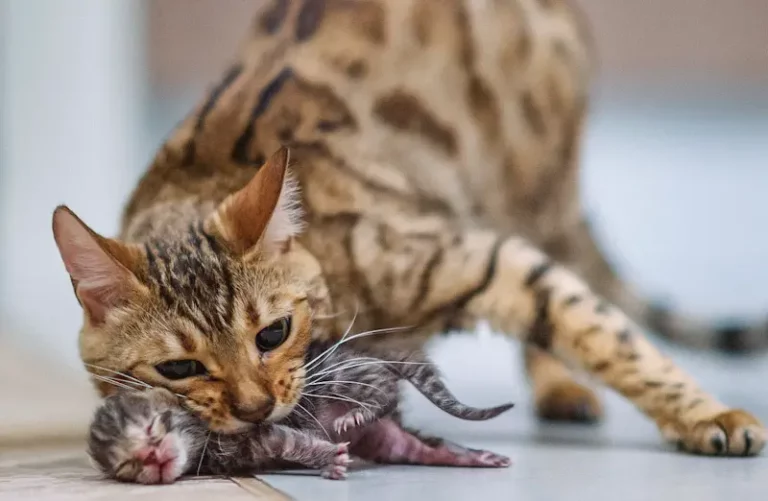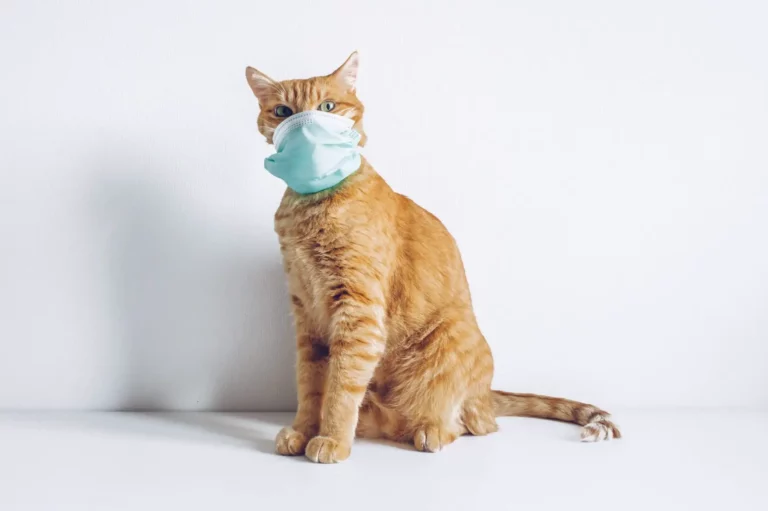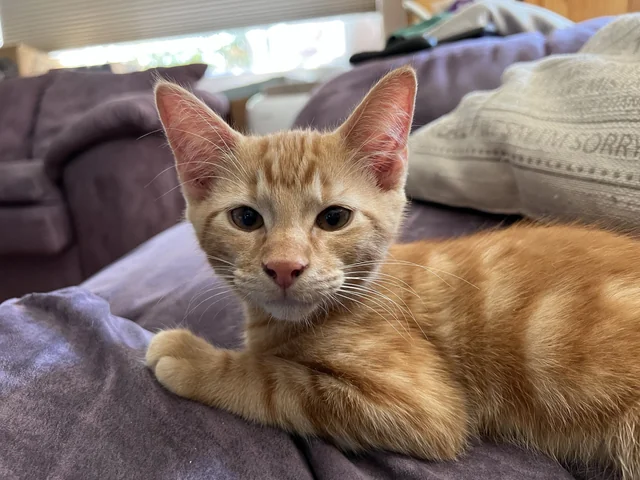Can Cat Tails Really Fall Off? Unveiling the Truth!
Can cat tails really fall off? The simple answer is yes, under specific circumstances. Cat tails, like any part of the body, are susceptible to injuries, diseases, and other conditions that might result in partial or complete loss.
While it’s uncommon for a cat’s tail to “randomly” fall off, various underlying causes can contribute to such an occurrence. In this blog post, we will unveil the truth behind these events, shedding light on myths and providing guidance for worried cat owners.
Key Takeaways:
- Cat tails can fall off due to injuries, medical conditions, or severe trauma.
- It’s essential to differentiate between myths and facts.
- Immediate veterinary care is crucial for tail injuries or issues.
Short Answer: Yes, under specific conditions like injuries or severe trauma, a cat’s tail can fall off. However, it doesn’t happen “randomly” or without an underlying cause. Immediate veterinary attention is vital in such cases.
Anatomy of a Cat’s Tail
A cat’s tail is much more than just a furry appendage that swings and curls. Delving into its anatomy gives us a clearer perspective on its importance, how it functions, and why certain injuries or conditions can be quite serious.
Vertebral Structure
At the core of a cat’s tail are small bones called vertebrae. These vertebrae form the backbone of the tail, providing it with structure and flexibility. Depending on the cat, there can be anywhere from 13 to 23 individual vertebrae in the tail.
Muscles and Tendons
Wrapped around these vertebrae are various muscles and tendons. They grant the tail its wide range of motion, from the flick of irritation to the high arch of a scared cat. These muscles are also responsible for balance. When a cat walks on a narrow path or makes a sharp turn during a chase, the tail acts as a counterbalance.
Nerves
Running alongside the bones and muscles are nerves, vital for communication between the tail and the cat’s brain. These nerves relay sensory information and control movement. Any damage to these nerves can lead to loss of tail function or even pain.
Blood Vessels
Blood vessels in the tail ensure that the tissues get adequate nourishment. They play a crucial role in the tail’s health. Any obstruction or injury to these vessels can lead to complications like necrosis.
Fur and Skin
The outermost layer of the tail consists of the cat’s skin and fur. This layer protects the tail, offers sensory feedback through hair follicles, and, of course, contributes to a cat’s distinct beauty.
Function and Importance
Beyond balance and expressiveness, a cat’s tail also serves as a protective mechanism. Cats often puff up their tails when threatened, making them appear larger to potential threats. Moreover, the tail acts as an extension of a cat’s communication palette, signaling emotions and intentions to other animals and humans.
Understanding the intricacies of a cat’s tail anatomy underscores the importance of keeping it healthy. Whether it’s ensuring they don’t get trapped in doors or being vigilant about any changes, it’s clear that the tail is more than just a pretty accessory—it’s a vital part of the feline anatomy.

Detailed Causes and Symptoms of a Cat’s Tail Falling Off
When it comes to the issue of a cat’s tail falling off or showing signs of distress, understanding the potential causes and recognizing the symptoms is crucial. Here’s a closer look at some common problems that can arise, along with their associated symptoms.
No products found.
Trauma and Injuries
- Cause: Physical trauma is a common cause of tail injuries. This can result from accidents like getting the tail caught in a door, being stepped on, or experiencing a fall.
- Symptoms: Swelling, noticeable pain, limp or immobile tail, bruising or bleeding, and behavioral changes like hiding or aggression.
Tail Pull Injuries
- Cause: When a cat’s tail is pulled hard, it can cause nerve damage, commonly referred to as a “tail pull injury.”
- Symptoms: Limp tail, loss of control over tail movement, incontinence, and potential paralysis of the tail.
Infections and Abscesses
- Cause: Bacterial infections, often resulting from bite wounds during cat fights.
- Symptoms: Swollen, warm-to-touch areas on the tail, discharge or pus, foul odor, and fever.
Tail Necrosis
- Cause: This refers to the death of the tail tissue, often due to a lack of blood supply caused by trauma, tight hair bands, or severe infections.
- Symptoms: Darkening or blackening of the tail tip, dry and brittle texture, and eventual detachment of the affected portion.
Congenital Issues
- Cause: Some cats might be born with tail abnormalities or issues due to genetic factors.
- Symptoms: Abnormally short tails, kinks, or other visible deformities from birth.
Tumors and Growths
- Cause: While rare, cats can develop tumors or growths on their tails.
- Symptoms: Visible lumps or bumps, changes in tail shape, hair loss around the area, and in some cases, discomfort or pain.
Degenerative Disorders
- Cause: Age-related degenerative disorders can affect the tail, leading to decreased mobility or other issues.
- Symptoms: Reduced tail movement, stiffness, or visible discomfort during movement.
Being aware of these causes and their symptoms can enable cat owners to respond promptly, ensuring the well-being of their feline friends. If any of these symptoms are observed, it’s essential to consult a veterinarian for a proper diagnosis and course of action.

Treatment, Recovery, and Rehabilitation
Cats are known for their resilience, but when their tails face challenges, prompt and appropriate care is essential. Depending on the cause and severity of the tail issue, treatments can vary widely. Let’s delve into the primary approaches to treatment, along with strategies for ensuring a smooth recovery and rehabilitation.
Immediate First Aid
- If there’s visible trauma to the tail, gently clean the area with a mild antiseptic solution, taking care not to cause further injury.
- For swelling or pain, a cold compress can be applied, but ensure it’s not too cold to avoid frostbite.
Veterinary Intervention
In most cases, consulting a veterinarian is advisable to ensure the best care. Depending on the diagnosis:
- Antibiotics: For infections or abscesses, a vet might prescribe a course of antibiotics.
- Pain Management: Anti-inflammatory medications or painkillers might be administered, especially in the case of trauma or surgery.
- Surgery: For severe trauma, tumors, or necrosis, surgical intervention might be necessary. This could range from removing a tumor to, in extreme cases, partial tail amputation.
- Physical Therapy: Especially in cases of nerve damage or after surgery, physical therapy can help restore mobility and function.
Home Care and Rehabilitation
Post-treatment, it’s crucial to ensure your cat has a conducive environment for recovery:
- Rest: Create a calm and quiet space for your cat, away from other pets or disturbances.
- Regular Checkups: Monitor the tail for any signs of worsening conditions, like increased swelling or discharge, and ensure follow-up visits to the vet.
- Protect the Tail: Depending on the injury, your cat might need a protective cone or cover to prevent them from biting or licking the affected area.
- Stimulating Activities: For cats with reduced tail mobility, engaging in stimulating activities can help. This includes playing with toys that promote movement or using interactive toys that challenge their cognitive functions.
- Nutrition: A balanced diet, rich in essential vitamins and minerals, can aid in faster healing. Your vet might also recommend specific supplements.
Understanding that each cat’s recovery journey is unique is essential. While some might bounce back rapidly, others might need extended care and patience. Throughout the process, love, understanding, and patience from their human companions are invaluable for their overall well-being.
Prevention, Safety Tips, and Other Insights
Cats are nimble creatures with an innate sense of curiosity. While we can’t shield them from all potential dangers, we can certainly create an environment that minimizes risks to their tails and overall well-being. Let’s dive into preventive measures and other insights to keep our feline friends safe and healthy.
Creating a Safe Home Environment
- Secure windows and balconies: Cats love to perch on windowsills, but a fall can result in serious injuries. Ensuring windows and balconies have secure screens or barriers can prevent such accidents.
- Tidy-up hazards: Loose strings, wires, or small objects might seem like playful toys for cats, but they can entangle or cause harm if ingested. Keeping your space tidy and cat-proof can make a big difference.
Be Cautious with Doors and Recliners
- Always check underneath recliners or sofas before adjusting them. Cats love to sneak into cozy, hidden spots, and an unexpected movement can lead to injury.
- Be vigilant when opening or closing doors, ensuring your cat’s tail isn’t caught in the way.
Regular Vet Check-ups
- Regular vet visits can catch potential health concerns, like infections or tumors before they become more severe. It’s a proactive step in ensuring your cat’s overall health.
Observe Behavioral Changes
- Cats are masters at hiding pain or discomfort. Any change in their behavior, like a sudden aversion to being petted or a change in tail movement, should be noted and discussed with a vet.
Provide Enrichment and Exercise
- By providing toys, scratchers, and interactive games, you can channel your cat’s energy positively, reducing the chances of reckless behavior that might result in injuries.
Educate and Inform
- If you have children or frequent visitors, educate them about treating cats gently, particularly emphasizing not pulling or tugging at their tails.
Remember, while prevention is crucial, it’s equally important to remember that cats are adventurous by nature. Sometimes, despite our best efforts, they might end up in tricky situations. The key is to balance preventive measures with an understanding and response to their natural instincts and behaviors.
Myth vs Reality: Debunking Common Misconceptions
Cats, with their graceful agility and mysterious ways, often become subjects of various myths and misconceptions, especially when it comes to their physical attributes. Their tails are no exception. Let’s separate the facts from fiction.
Can Cats’ Tails Fall Off Randomly?
A widespread misconception is that cats’ tails can just randomly fall off. In reality, a cat’s tail will not spontaneously detach without a specific underlying cause, such as trauma or a medical condition.
Can Cats’ Tails Fall Off Naturally?
Another misconception is the notion that a cat’s tail can fall off naturally. While certain conditions may lead to tail loss, it’s not a “natural” occurrence akin to shedding fur or whiskers.
Do Cats’ Tails Fall Off and Grow Back?
Unlike some reptiles which can regrow lost tails, cats don’t have this ability. Once a cat loses a portion of its tail, it won’t grow back. The remaining portion, however, can heal over time with proper care.
Why Do Cats’ Tails Fall Off Sometimes?
Cats’ tails may fall off due to severe trauma, infection, or necrosis. It’s not a common occurrence and usually indicates a serious underlying problem.
Tip of the Cat’s Tail Fell Off
The tip of a cat’s tail can become vulnerable due to being trapped, bitten, or caught in a door. If damage occurs to the tip, it might fall off, especially if blood flow is compromised, leading to necrosis.
Cat Tail Bone Exposed
In cases of severe trauma, the bone within the tail might become exposed. This is a serious condition, and without prompt medical intervention, the cat risks infection, further injury, and increased pain.
Tip of Kitten’s Tail Fell Off
Kittens, being more playful and less aware of their surroundings, might sometimes injure their tails. If the tip falls off, it’s often due to a traumatic incident. Immediate veterinary care is essential to prevent complications.
Cat Tail Necrosis
Tail necrosis refers to the death of the tail’s tissue due to a lack of blood flow. It’s a painful and dangerous condition. Causes can range from tight hair bands cutting off circulation to injuries that damage blood vessels. Prompt treatment is crucial to prevent the spread of dead tissue and to manage pain.
By debunking these myths, cat owners can be more informed and take proactive steps if they notice any issues with their feline friend’s tail. Always remember, when in doubt, consult a veterinarian.
Frequently Asked Questions
Will a Cat’s Tail Fall Off if It’s Broken?
No, a cat’s tail won’t just fall off if it’s broken. However, if the tail is severely injured and doesn’t receive proper medical attention, necrosis (tissue death) can set in, which might lead to the tail needing to be amputated by a veterinarian.
Why Do Cats Get Their Tails Cut Off?
Cats might have their tails surgically removed due to medical reasons such as injury, tumors, or infections. Some breeds, like the Manx, naturally have short or no tails. It’s essential to note that tail docking for purely cosmetic reasons is widely considered unethical and is banned in many countries.
What Does a Cat’s Broken Tail Look Like?
A broken tail might appear limp or bent at an odd angle. The cat might also drag it on the ground. Swelling, discoloration, or a noticeable kink are other signs. It’s also possible that the cat might exhibit pain or discomfort when the tail is touched.
How Long Does It Take for a Cat’s Tail Injury to Heal?
The healing time for a tail injury varies depending on its severity. Minor bruises or sprains might heal within a few days to a week. However, fractures or more severe injuries might take several weeks to months. It’s crucial to consult with a veterinarian for a precise diagnosis and recovery timeline.
Do Cats Feel Pain in Their Tails?
Yes, cats do feel pain in their tails. The tail contains nerves, muscles, and vertebrae. If injured or pulled, a cat will feel discomfort or pain, evident in their behavior or reactions.
Will a Cat’s Behavior Change After Losing Its Tail?
Some cats might become more reserved or anxious after losing a part or all of their tails, especially if it’s due to a traumatic event. The tail plays a role in balance, so there might be initial adjustments in their movements. Over time, however, most cats adapt remarkably well.
How Can I Help My Cat Adapt After Tail Loss?
Offering comfort, ensuring their environment is safe, and providing them with extra love and attention can help. Monitor their movements, especially when climbing or jumping. Consult with a vet for specific advice on any adjustments to their environment or lifestyle.
Are Certain Breeds More Susceptible to Tail Injuries?
While tail injuries can happen to any cat, breeds with longer tails might be more prone simply due to the tail’s length. However, it’s more about the individual cat’s behavior and environment than the breed itself. Always ensure your cat’s environment minimizes risks to their safety.
Final Thoughts
Cats are creatures of grace and agility, with their tails playing a significant role in their balance, communication, and overall well-being. While there are myths and misconceptions surrounding the idea that a cat’s tail can just “fall off,” it’s crucial to approach such claims with knowledge and understanding.
Tail injuries, although concerning, can often be treated with prompt medical intervention. Always prioritize your cat’s safety, and remember that while they might face challenges after an injury or loss of their tail, their resilience and adaptability shine through.
As pet owners, our role is to offer them the best care, understanding, and love, ensuring they lead a life full of comfort and happiness.
Additional Resources
For those keen to delve deeper into the intricacies of feline anatomy, behavior, and health, the following resources provide a wealth of information:
- Books:
- “The Cat: Its Behavior, Nutrition, and Health” by Linda P. Case.
- “Feline Anatomy: A Coloring Atlas” by Thomas O. McCracken & Robert A. Kainer.
- Websites:
- The American Association of Feline Practitioners (AAFP): Comprehensive guidelines and resources on cat health.
- The Cornell Feline Health Center: A trusted source of health information for cat owners.
- Online Forums:
- The Cat Site: An active forum where cat owners discuss a variety of topics including health and behavior.
- Mobile Apps:
- Pet First Aid: Produced by the American Red Cross, this app offers advice on emergency situations for cats (and dogs).
Always remember to consult with a veterinarian or feline specialist for any health or behavior concerns about your cat. The well-being of our furry friends is paramount, and being informed is one of the best ways to ensure their happiness and longevity.




![Why Does My Cat Keep Pooping Outside the Litter Box? [5 Things You Can Do]](https://www.warmlypet.com/wp-content/uploads/2023/01/senior_cat_not_using_litter_box-1024x548-1-768x411.webp)



